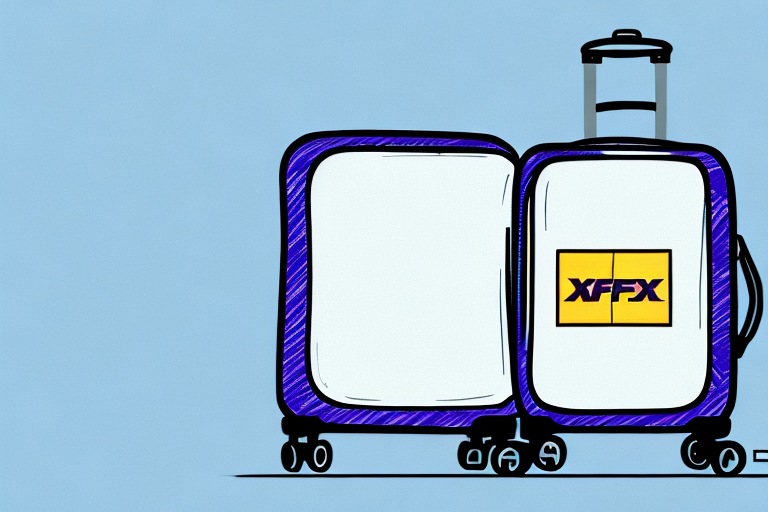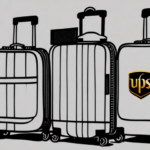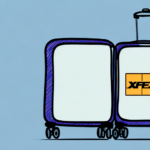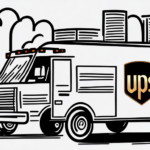Understanding FedEx Shipping Rates for Check-In Baggage
When planning a trip, many people choose to ship their luggage with FedEx rather than checking it in at the airport. However, understanding the FedEx shipping rates for check-in baggage can be confusing. In this article, we provide an overview of FedEx shipping services and delve into the specifics of how FedEx determines rates for check-in baggage. We also cover factors that can affect those rates and provide tips for properly packaging your items to save money. Finally, we discuss common mistakes to avoid when shipping with FedEx, how to track your shipment, and the insurance options available.
An Overview of FedEx Shipping Services
FedEx is a global courier service that offers a wide range of shipping options. Their services include:
- Express Shipping: Fast delivery services for time-sensitive packages.
- Ground Shipping: Cost-effective shipping for less urgent deliveries.
- Freight Shipping: Suitable for large or heavy shipments.
FedEx specializes in shipping items that are time-sensitive or require unique delivery options, such as refrigeration or special handling. They are also known for their robust tracking system, allowing customers to monitor the status of their shipment at every step.
In addition to standard shipping services, FedEx offers specialized services for businesses, including:
- Printing and marketing materials
- Managing inventory
- Fulfillment services
These services help businesses streamline their shipping and logistics processes, allowing them to focus on other aspects of their operations. With their extensive network and experience, FedEx is a reliable partner for businesses of all sizes. According to Forbes, FedEx continues to innovate by integrating advanced technologies to enhance their logistics capabilities.
The Difference Between FedEx and Other Shipping Service Providers
While many shipping service providers offer similar services to FedEx, there are some key differences:
- Focus on Time-Sensitive Items: FedEx is renowned for its quick and reliable delivery, making it ideal for shipping perishable goods, medical supplies, or other items that require fast delivery.
- Specialized Industry Services: FedEx has dedicated teams for specific industries, such as healthcare and hazardous materials. For example, their healthcare team specializes in shipping medical equipment and pharmaceuticals, while their hazardous materials team handles chemicals and other dangerous goods with the necessary precautions and documentation.
These distinctions make FedEx a preferred choice for specialized shipping needs that require precision and reliability.
Understanding How FedEx Determines Rates for Check-In Baggage
FedEx determines shipping rates for check-in baggage based on several factors:
- Weight and Dimensions: The heavier and larger the package, the higher the cost.
- Distance: Shipping over longer distances increases the rate.
- Shipping Method: Express shipping is more expensive than ground shipping.
- Item Type: Fragile items that require special handling typically cost more.
- Destination Customs Regulations: International shipments may incur additional fees or require extra documentation based on the destination country's regulations.
For example, shipping a fragile item like electronics with special packaging will cost more than shipping non-fragile items. Additionally, according to Statista, FedEx reported a revenue of over $95 billion in 2023, reflecting its extensive service offerings and global reach.
Additional services, such as requiring a signature upon delivery or insuring your package, will also add to the overall shipping cost. It's essential to evaluate which services are necessary for your shipment to manage costs effectively.
Factors that Affect FedEx Shipping Rates for Check-In Baggage
Several factors influence FedEx shipping rates for check-in baggage:
- Weight and Dimensions: The primary factors in determining shipping costs.
- Distance: Longer shipping distances result in higher costs.
- Shipping Method: Express options are more costly than ground shipping.
- Item Type: Fragile or hazardous items may require special handling, increasing costs.
- Destination: Remote or difficult-to-access locations can incur additional fees.
Properly labeling and packaging items, especially those that are fragile or hazardous, can help avoid extra fees. It's also advisable to check with FedEx for any additional charges or restrictions related to specific destinations.
For more detailed information, refer to FedEx shipping services.
How to Properly Package Your Check-In Baggage for FedEx Shipping
Proper packaging ensures that your items arrive safely and without damage. Follow these guidelines when packing your luggage:
- Use Sturdy Materials: Opt for corrugated cardboard boxes or plastic bins.
- Cushioning: Utilize bubble wrap, foam peanuts, or packing paper to protect contents from shifting.
- Labeling: Clearly label your package and include a packing slip that lists the contents.
- Weight and Size Compliance: Ensure your package meets FedEx's weight and size restrictions to avoid additional fees or rejection.
Additionally, verify that all items are allowed for shipping, as some may be restricted or prohibited by FedEx or local laws. According to FedEx's shipping guidelines, adhering to these standards helps in smooth transit and delivery of your baggage.
Tips for Saving Money on FedEx Shipping Rates for Check-In Baggage
Here are several strategies to reduce your FedEx shipping costs:
- Choose Ground Shipping: Opting for ground shipping instead of express can significantly reduce costs, though it may take longer.
- Efficient Packaging: Use the smallest possible box or container and pack items carefully to minimize size and weight.
- Take Advantage of Discounts: Look for available discounts or promotions, such as student discounts or bulk shipping rates.
- Use a Shipping Calculator: Compare rates using a shipping calculator to find the most affordable option for your needs.
- Plan Ahead: Shipping in advance can help you avoid rush fees and last-minute shipping costs.
By implementing these tips, you can save money on FedEx shipping rates while ensuring your items arrive safely and on time.
Common Mistakes to Avoid When Shipping Check-In Baggage with FedEx
Avoid these common errors to ensure a smooth shipping experience with FedEx:
- Poor Packaging: Inadequate packaging can lead to damaged items. Ensure strong packaging and proper cushioning.
- Improper Labeling: Incorrect or unclear labels can cause tracking issues and delivery delays. Always label your package clearly.
- Ignoring Customs Regulations: For international shipments, failing to comply with customs regulations can result in delays or shipment returns. Research and adhere to destination country rules.
- Exceeding Weight and Size Limits: Oversized or overweight packages may incur additional fees or be rejected. Measure and weigh your package accurately before shipping.
- Not Purchasing Insurance: Valuable items should be insured to protect against potential loss or damage.
By being mindful of these potential pitfalls, you can avoid unnecessary complications and ensure your baggage arrives as intended.
How to Track Your Check-In Baggage Shipment with FedEx
FedEx provides a comprehensive tracking system to monitor your shipment's progress:
- Tracking Number: Obtain a tracking number when you ship your baggage.
- Online Tracking: Enter the tracking number on the FedEx website or use the FedEx mobile app to view the current status of your shipment.
- Shipment Status: Track key milestones, including pickup, transit, and delivery.
- Manage Your Shipment: Options include requesting a hold at a FedEx location, redirecting the shipment to a new address, or scheduling a preferred delivery time.
If you encounter any issues or have questions about your shipment, FedEx offers 24/7 customer support through their website, phone, or chat services, ensuring assistance is always available.
Understanding the Insurance Options Available for Your Check-In Baggage Shipment with FedEx
When shipping check-in baggage with FedEx, you have several insurance options to protect your items:
- Basic Liability Coverage: Provides up to $100 of coverage in the event of loss or damage.
- Declared Value Coverage: Allows you to declare the value of your shipment and purchase additional insurance accordingly, offering higher coverage limits.
If your items are particularly valuable, it is advisable to purchase additional insurance to ensure full coverage. Be aware that certain items, such as fragile or perishable goods, may not be covered under FedEx’s standard insurance options. In such cases, consider alternative shipping methods or third-party insurance providers.
Always thoroughly read and understand the terms and conditions of any insurance policy before making a purchase to ensure you are fully aware of the coverage details.
Conclusion
Shipping check-in baggage with FedEx can be a convenient and reliable option for travelers. By understanding how FedEx determines rates, properly packaging your items, and taking advantage of available discounts, you can save money and ensure that your baggage arrives safely at its destination. Avoiding common mistakes, tracking your shipment, and utilizing appropriate insurance options further streamline the shipping process, making it as smooth and stress-free as possible. So the next time you're planning a trip, consider shipping your luggage with FedEx!
For more information on optimizing your shipping strategy, visit ShipScience.






















